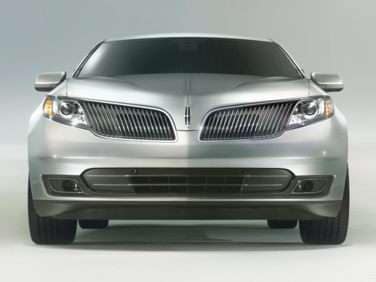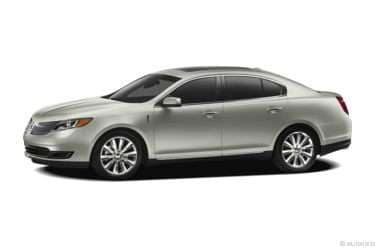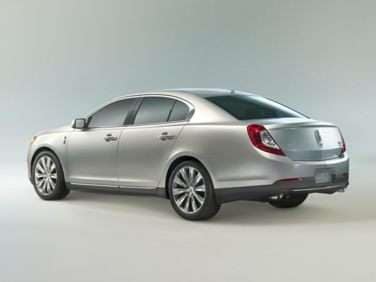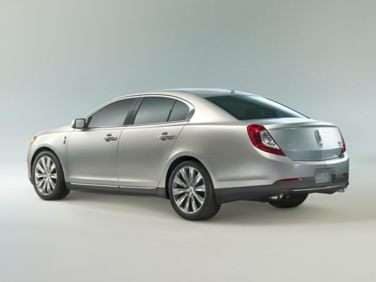Recent Articles
Popular Makes
Body Types
Meet the 2013 Lincoln MKS

Exemplified by new products like the all-new Cadillac XTS, redesigned Hyundai Azera and Buick LaCrosse GL concept, the Los Angeles Auto Show clearly saw a lot of action in the near-premium segments, and this also included the premiere of the 2013 Lincoln MKS. Lincoln’s flagship sedan benefits from a fairly comprehensive makeover for the new model year, with fresh style and more technologies, and is meant to preview the direction of future vehicles from the division.
The New Look of Lincoln
At the risk of re-writing history, Max Wolff, the director of Lincoln Design, said that: “The original MK vehicles were, in some ways, deliberately provocative.”
One thing’s for sure, they certainly provoked an outcry from both critics and customers alike. The oversized grilles bordered on the cartoonish, with large, widely spaced blades that brought to mind the mouths of baleen whales. Wolff and Co. toned things down considerably on the MKS for 2013, creating a much more refined appearance that should no longer scare away customers (or plankton). And this reflects more than just a nose job. The MKS was entirely re-skinned from the A-pillar forward and adds a new rear fascia, LED tail lamps, fresh exhaust tips and a redesigned decklid that also increases the usability of the car’s trunk.
Significant changes are on display in the MKS’ cabin, too. As explained by Wolff, “The previous MKS was very linear and horizontal. Now we have an interior that’s dominated by lines that sweep up from the center stack and flow out to the sides. This is a styling cue you’ll see more in future Lincoln models.”
Key upgrades to the interior include an all-new instrument panel, now featuring a center-positioned speedometer nestled between two full-color, reconfigurable 4.2-inch LCD screens, along with a new heated steering wheel and fresh choices for the MKS’ wood accents and leather colors. Of particular note are the car’s available “multi-contour” seats. They feature seven different computer-controlled air bladders—four in the seat bottom, three in the seat back—to provide optimal comfort for a wide range of different-sized owners.[pGe]Putting Drivers in Control
Lincoln hopes to position itself in the marketplace as a technology leader, and the MKS sets the pace by introducing a segment-exclusive Continuously Controlled Damping (CCD) system. This cutting-edge suspension enhancer is standard on the ’13 MKS and can adjust damping rates up to 500 times every second for greatly improved ride and handling.
Working in combination with the MKS’ CCD system is Lincoln Drive Control, which allows drivers to adjust the car’s handling performance, ride firmness, throttle response, shift feel, steering response and traction control/electronic stability control parameters to meet different preferences across different driving scenarios. Three basic settings are available here, including the standard “Drive” mode, a luxurious “Comfort” mode and a more athletic “Sport” setting. The latter choice also leverages Lincoln’s new Torque Vectoring Control, designed to minimize understeer and maximize cornering control.
Drivers will have two ways to activate Lincoln Drive Control: Via the gearshift or the MKS’ MyLincoln Touch with SYNC feature, now specifically updated to meet customer demands for easier use.
As just one example, the latest generation of the Lincoln’s in-car connectivity/infotainment system includes Operator Assist, allowing drivers to connect with live advisors at no extra charge, and the ability to function as a Wi-Fi hotspot for passengers who want to connect their computers, tablets, etc., to the Internet.
The MKS also will launch Lincoln’s comprehensive Lane Keeping System. Comprised of three separate elements, this system can detect lane markers on the road and then warn the driver if the MKS is drifting out of its lane, adjust torque to automatically “nudge” the vehicle back into its lane, and provide alerts if the system detects a “driving pattern typically exhibited by a drowsy driver.”

A Powertrain with More Power—and Better Efficiency
The base engine on the 2013 MKS is Ford’s proven 3.7-liter V6, updated with technology like twin independent variable camshaft timing. The result is an additional 27 hp and 5 lb.-ft. of torque under the hood, as well as 3 more mpg in highway driving for both front- and all-wheel-drive models. The new totals: 300 hp, 275 lb.-ft. of torque and expected EPA ratings of 19 mpg city/28 mpg highway for the FWD MKS and 18/26 for the MKS configured with AWD.
The MKS’ 3.5-liter EcoBoost powerplant remains the up-level engine choice on the AWD version, relying on twin-turbo technology (and more) to make 355 hp and 350 lb.-ft. of torque while delivering an EPA line of 17/25.
That means the MKS’s standard engine offers better highway fuel-efficiency marks than rivals like the Acura RL, Cadillac STS and Mercedes-Benz E-350 while the EcoBoost holsters 45 more horses than the Audi A6’s optional supercharged V6, and 55 more than the optional turbo I6 in the BMW 5-Series.
Both MKS engines rely on Lincoln’s SelectShift Automatic six-speed transmissions, with standard steering-wheel-mounted paddle shifters.

Revising Expectations
At this stage in the game, the Lincoln flagship is absolutely foundering in the marketplace. Deliveries were down by 9.6 percent in October, and that actually marks an improvement on the car’s 18.9 percent year-to-date sales drop. It’s the worst performance in the Lincoln family in 2011—except for the moribund Lincoln MKT—so turning things around with the MKS is obviously a high priority for the division. The upgrades for 2013, as extensive as they are, don’t quite achieve this, however; it’s still a car with relatively limited appeal, mostly for customers who prefer traditional, American-style luxury.
But it is a nice evolution of that style and should at least help the brand tread water until truly all-new products reach dealers, hopefully some time in the mid-term future. As far as the 2013 Lincoln MKS, that will reach dealers in the spring of next year.
